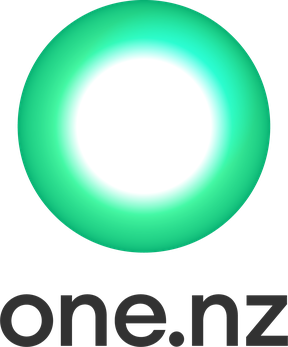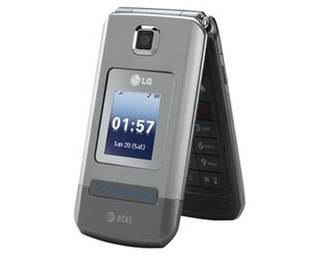
The Global System for Mobile Communications (GSM) is a standard developed by the European Telecommunications Standards Institute (ETSI) to describe the protocols for second-generation (2G) digital cellular networks used by mobile devices such as mobile phones and tablets. GSM is also a trade mark owned by the GSM Association. "GSM" may also refer to the voice codec initially used in GSM.
The Universal Mobile Telecommunications System (UMTS) is a 3G mobile cellular system for networks based on the GSM standard. Developed and maintained by the 3GPP, UMTS is a component of the International Telecommunication Union IMT-2000 standard set and compares with the CDMA2000 standard set for networks based on the competing cdmaOne technology. UMTS uses wideband code-division multiple access (W-CDMA) radio access technology to offer greater spectral efficiency and bandwidth to mobile network operators.

3G is the third generation of cellular network technology, representing a significant advancement over 2G, particularly in terms of data transfer speeds and mobile internet capabilities. While 2G networks, including technologies such as GPRS and EDGE, supported limited data services, 3G introduced significantly higher-speed mobile internet, improved voice quality, and enhanced multimedia capabilities. Although 3G enabled faster data speeds compared to 2G, it provided moderate internet speeds suitable for general browsing and multimedia content, but not for high-definition or data-intensive applications. Based on the International Mobile Telecommunications-2000 (IMT-2000) specifications established by the International Telecommunication Union (ITU), 3G supports a range of services, including voice telephony, mobile internet access, video calls, video streaming, and mobile TV.

Freedom of Mobile Multimedia Access (FOMA) is the brand name of the W-CDMA-based 3G telecommunications services being offered by the Japanese telecommunications service provider NTT DoCoMo. It is an implementation of the Universal Mobile Telecommunications System (UMTS) and was the world's first 3G mobile data service to commence commercial operations.
Rogers Wireless Inc. is a Canadian mobile network operator headquartered in Toronto, providing service nationally throughout Canada. It is a wholly owned subsidiary of Rogers Communications. The company had revenues of just under $15.1 billion in 2018. Rogers Wireless is the largest wireless carrier in Canada, with 13.7 million subscribers as of Q2 2023.

One New Zealand, is a New Zealand telecommunications company. One NZ is the largest wireless carrier in New Zealand, accounting for 38% of the country's mobile share market in 2021.

RADIOMÓVIL DIPSA, S.A. DE C.V., doing business as Telcel, is a Mexican wireless telecommunications company, owned by América Móvil, founded in 1984 and based in Mexico City. Telcel holds concessions to operate a wireless network in all nine geographic regions in Mexico using both the 850 megahertz and 1900 megahertz radio spectrum.
Multimedia Broadcast Multicast Services (MBMS) is a point-to-multipoint interface specification for existing 3GPP cellular networks, which is designed to provide efficient delivery of broadcast and multicast services, both within a cell as well as within the core network. For broadcast transmission across multiple cells, it defines transmission via single-frequency network configurations. The specification is referred to as Evolved Multimedia Broadcast Multicast Services (eMBMS) when transmissions are delivered through an LTE network. eMBMS is also known as LTE Broadcast.

Mobitel was a Slovenian GSM/UMTS/LTE mobile operator. The company merged with Telekom Slovenije in 2013.

Nokia 6650 is a mobile phone developed by Nokia. It was the company's first 3G phone, first leaked in June 2002 and eventually unveiled on 26 September 2002. It was also the first device supporting the 3G W-CDMA 2100 MHz band.
Advanced Wireless Services (AWS) is a wireless telecommunications spectrum band used for mobile voice and data services, video, and messaging. AWS is used in the United States, Argentina, Canada, Colombia, Mexico, Chile, Paraguay, Peru, Ecuador, Trinidad and Tobago, Uruguay and Venezuela. It replaces some of the spectrum formerly allocated to Multipoint Multichannel Distribution Service (MMDS), sometimes referred to as Wireless Cable, that existed from 2150 to 2162 MHz.
The UMTS frequency bands are radio frequencies used by third generation (3G) wireless Universal Mobile Telecommunications System networks. They were allocated by delegates to the World Administrative Radio Conference (WARC-92) held in Málaga-Torremolinos, Spain between 3 February 1992 and 3 March 1992. Resolution 212 (Rev.WRC-97), adopted at the World Radiocommunication Conference held in Geneva, Switzerland in 1997, endorsed the bands specifically for the International Mobile Telecommunications-2000 (IMT-2000) specification by referring to S5.388, which states "The bands 1,885-2,025 MHz and 2,110-2,200 MHz are intended for use, on a worldwide basis, by administrations wishing to implement International Mobile Telecommunications 2000 (IMT-2000). Such use does not preclude the use of these bands by other services to which they are allocated. The bands should be made available for IMT-2000 in accordance with Resolution 212 ." To accommodate the reality that these initially defined bands were already in use in various regions of the world, the initial allocation has been amended multiple times to include other radio frequency bands.

bmobile is a Mobile Phone, Home Security provider, and fixed wireless provider of Trinidad and Tobago, operating as a division of TSTT.

The LG CU575, also known as the Trax, is a 3G GSM/UMTS mobile phone carried by AT&T Mobility. It is designed to run on AT&T's UMTS frequencies of 850 and 1900 MHz. The phone features a slim design similar to the Motorola RAZR series, and also features external music controls and a microSD memory card slot supporting cards up to 4 GB. The phone is a replacement for the LG CU500.
In telecommunications, long-term evolution (LTE) is a standard for wireless broadband communication for mobile devices and data terminals, based on the GSM/EDGE and UMTS/HSPA standards. It improves on those standards' capacity and speed by using a different radio interface and core network improvements. LTE is the upgrade path for carriers with both GSM/UMTS networks and CDMA2000 networks. Because LTE frequencies and bands differ from country to country, only multi-band phones can use LTE in all countries where it is supported.

2degrees is a New Zealand full service telecommunications provider. It's the third-largest wireless carrier in New Zealand, with 1.3 million subscribers as of July 2015. Since launching its mobile network, 2degrees broke up the New Zealand mobile duopoly halving the price of Prepay overnight. 2degrees offers services across mobile, broadband, business and power.

In telecommunications, a multi-band device is a communication device that supports multiple radio frequency bands. All devices which have more than one channel use multiple frequencies; a band however is a group of frequencies containing many channels. Multiple bands in mobile devices support roaming between different regions where different standards are used for mobile telephone services. Where the bands are widely separated in frequency, parallel transmit and receive signal path circuits must be provided, which increases the cost, complexity and power demand of multi-band devices.
3G mobile telephony was relatively slow to be adopted globally. In some instances, 3G networks do not use the same radio frequencies as 2G so mobile operators must build entirely new networks and license entirely new frequencies, especially so to achieve high data transmission rates. Other delays were due to the expenses of upgrading transmission hardware, especially for UMTS, whose deployment required the replacement of most broadcast towers. Due to these issues and difficulties with deployment, many carriers delayed acquisition of these updated capabilities.

Vodafone Australia is an Australian telecommunications brand providing mobile and fixed broadband services. Vodafone’s mobile network covers more than 23 million Australians, and Vodafone has commenced the rollout of its 5G mobile network. Vodafone NBN fixed broadband services are available in capital cities and selected regional centres. Vodafone is the third-largest wireless carrier in Australia, with 5.8 million subscribers as of 2020.











